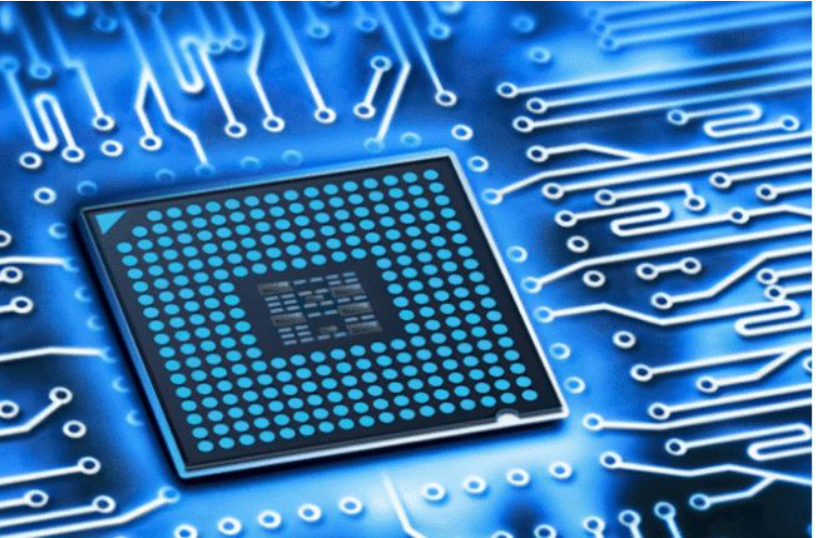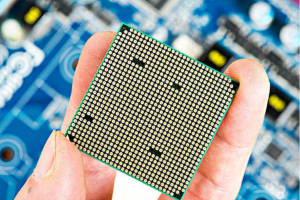Not only real estate has to be de-stocked, but also cell phones.
According to cell phone research expert Ming-Chi Kuo, Android machines are facing the risk of high inventory, in Xiaomi about the equivalent of 20-30 million cell phone parts inventory, the most powerful pile up is the processor, Samsung cell phones and their parts inventory, is expected to June may be reduced to normal water level.
Last May, China’s smartphone industry shocked 30 million smartphone inventory, the collapse of the momentum than expected, to three quarters, the domestic Android system cell phone chain chip manufacturers inventory with the ring continued to rise, Weir shares, Jusheng micro and Huideng technology, inventory turnover days exceeded the average level of nearly three years, while the overall global smartphone shipments last year, fell to the lowest point since 2013.

Domestic low-end and mid-range cell phones are ushering in an unprecedented price war, Apple’s high-end models are also rare price cuts, the current backlog of cell phone inventory issues for more than a year, how to implicate and shock domestic and foreign cell phone electronic components industry chain? When will the inventory be cleared? Read this article and you will learn about.
1. Xiaomi, Samsung cell phone inventory situation
2. how cell phone manufacturers to inventory
3. The latest performance of cell phone supply chain
01 The Great Android Recession
Low and mid-range demand is the worst
Android machines are facing the risk of high inventory, and inventory clearance there is a greater recession, due to weak demand for parts and components from brands or distributors / dealers, experts believe that the next 6-9 months will still see a large number of shipments year-on-year growth rate decline.
Xiaomi’s cell phone business revenue decreased 11.1% year-over-year in the third quarter of 2022, with smartphone shipments declining 8.4% year-over-year to 40 million units and cell phone ASPs down 3% to 1,058 yuan.
The discount promotion is still going on, recently Xiaomi Group President Lu Weibing said that the price of its new RedmiK60, which was released in December, has been reduced to only 2,999 yuan for 12+512GB, a price cut of 300 yuan, and a price guarantee for users who have already purchased this version.
In fact, through promotions at the end of last year, Xiaomi’s cell phone inventory of a large number of low- and medium-priced products has declined, but it is not yet completely free from the risk of high inventory. Its inventory of “manufactured goods” reached 27.3 billion yuan in the third quarter of 2022, down from the previous year, but accounting for 65% of its cell phone revenue in the third quarter.
The global Android camp boss Samsung’s performance is also not optimistic.
Samsung Electronics’ fourth-quarter 2022 revenue fell 8 percent year-over-year and operating profit was lower than previously estimated due, among other things, to slower sales of smartphones in its MX (Mobile eXperience) division. Samsung’s MX division is part of the DX (Device eXperience) business group, and its revenue fell 4% year-over-year and 10% sequentially in the fourth quarter of 2022 when combined with revenue from home appliances and other products.
Cell phone stagnation, cell phone chips and other electronic parts inventory pile high, how to digest these stocks, cell phone manufacturers have done their homework. The chip majors revealed that the demand in the low-end and mid-range cell phone market is the weakest compared to the high-end cell phone market. In fact, in the 1000-3000 yuan price point of the low-end and mid-range cell phone market, domestic smart phones cover the widest range again.
The most direct is the concessions, price war, mainstream cell phone manufacturers are in the “6.18″, “Double 11″ and other important time nodes for substantial promotions. Last November, the cell phone market ushered in the “wait party” carnival, the Android camp, 2000 yuan can buy a balanced performance configuration of the “bucket machine”, ¥1000 price is more to let people pick the eye. ¥2000-3000 bracket of the The price reduction is often the most obvious.
Apple cell phones outside the Android camp, also suspected of participating in the price reduction process, last year Apple cell phones just released less than a month, in addition to high-end models of ordinary models fell below about 5200 yuan, from February 5 this year, Apple also rare price cuts, high-end models iPhone 14 Pro series offline authorized stores generally reduced prices by about 700 yuan, the global smartphone market is ushering in the dark moment.
Manufacturers in the launch of the new machine configuration, may also be based on the consideration of inventory, they know “old wine in new bottles”, the most intuitive is a model may be used less matching configuration.
Some knowledgeable users said that this year, we see many products, even the main products, continue to use very old components, and some components with large inventories must be used in the main models, the branch products simply can not digest the inventory.
Starting in the second half of 2021, cell phone electronic parts cut orders have begun to ferment, according to Jiji Cat statistics, many models in 2021 on the configuration of some popular explosive products to fine-tune, and then listed for sale in 2022.
Some of the classic configuration of previous years in 2022 can still often see, such as Qualcomm Snapdragon 870, Snapdragon 778, the ranks of cell phone CMOS IMX766, the classic 8 + 2 MP sub-camera combination, the spring new gear including flagship products, including the main products of each, we spit out the upgrade is not obvious, and some even downgraded.
For a long time, the industry consensus replacement cycle was 18 months, but by 2022, the replacement cycle for domestic consumers is stretched to 30 and 36 months. A cell phone manufacturer supply chain leader said that from the third and fourth quarter of 2021, price cuts have become the main theme of cell phone manufacturers, the market circulation of MediaTek and Qualcomm’s processor chips have begun to reduce prices.
The price reduction of the new machine continues to the beginning of the year 2023, low-end phones, Redmi sex price is no longer a monopoly, a plus Ace2, true GT Neo5 lock 2000-3000 yuan price segment, maintain not weaker than the K60 configuration at the same time pricing sincerity.
Later manufacturers how to face the recession in demand, perhaps in this year’s “6.18″ shopping festival can be seen – who prices dive big, who sold poorly, inventory pressure.
02 Cell phone supply chain latest results.
Slipping, Weak
The electronic components of a mobile phone, memory accounts for about 15-20%, processors and other chips account for about 15-20%, display screens 10-20%, cameras 10-15%, RF/antenna 5-10%, in addition to shells/structural parts, batteries, FPC/PCB and so on.
In 2022, the cell phone supply chain is generally affected by the severe consumer demand recession, and the inventory level keeps lighting up red, even leading to performance losses, including but not limited to the cell phone chip duo MediaTek and Qualcomm, Texas Instruments with the widest range of customers, fingerprint identification chip leader Huitian Technology, global optical lens leader Sunwoo Optical, domestic RF chip makers Chosen Micro and VTech, MLCC leader Murata, and a host of memory chip manufacturers, ushering in a very challenging market environment in 2023.
The following are the latest results of each cell phone electronic component-related company.
Cell phone processors and other chips
MediaTek’s Q4 2022 revenue declined 25% year-over-year and 26% sequentially. The handset business segment, which contributed 52% of MediaTek’s revenue in the fourth quarter of 2022, is down 25% year-over-year and 30% sequentially due to a slowdown in China, weak consumer demand and smartphone OEM inventory adjustments as customers aggressively adjust their inventories, a segment MediaTek has revised revenue for the first quarter of 2023 down to $300-$3.4 billion, down 35- MediaTek has lowered revenue to $300-3.4 billion for Q1 2023, down 35-40% year-over-year and 3-12% sequentially, and has guided inventory levels to return to normal by the end of H1 2023.
Qualcomm’s CDMA Technologies (QCT) segment revenue for the first quarter of fiscal 2022/23, which includes smartphone chips, RF front-end components, automotive chips and IoT devices, declined 11 percent year-over-year, with handset chip revenue down 18 percent year-over-year. Given the economic and demand environment, the company is further reducing spending and now expects rising channel inventory levels in the handset industry to continue until at least the first half of 2023, with further declines in 3G, 4G and 5G handset shipments likely in 2023 compared to 2022.
Fingerprint identification chip leader Huideng Technology expects to achieve a net profit attributable to owners of the parent company of -900 million yuan to -600 million yuan for the year 2022, compared with the same period of the previous year, which will result in a loss. The main reason for the change in performance is that the majority of the company’s products depend on the smartphone market, which is affected by the international situation, macroeconomy and the ongoing epidemic, resulting in a large decline in market and customer demand; at the same time, the company’s main product competition has intensified sales price pressure, resulting in a 35% to 45% year-on-year decrease in the company’s operating income in 2022. In fiscal 2022, the provision for impairment of various assets is estimated to range from $702 million to $872 million.
Cell phone memory chips
Samsung Electronics’ Q4 2022 revenue down 8%, operating profit down 69% year-over-year. DS (Device Solutions) business group, which is mainly responsible for semiconductor and chip foundry business, reported a 24% decline in revenue in the fourth quarter of 2022 compared to the same period last year and a 13% decline from the same period last year; its revenue for the full year 2022 was 9,846 billion won (approximately $79.9 billion), an increase of 3% compared to 2021. The decline in revenue for this business group was mainly due to client-side inventory absorption and lower flash memory chip prices.
SK Hynix’s fourth-quarter 2022 revenue fell 38 percent year-on-year, with a net loss of 3.52 trillion won ($2.881 billion), compared with a net profit of 3.32 trillion won ($2.717 billion) a year earlier, SK Hynix’s first quarterly loss since the third quarter of 2012 and the largest quarterly loss on record. SK Hynix remains pessimistic about the market demand in the first quarter of 2023, expecting that DRAM chip shipment growth rate may decline by more than 10% and the slump will continue in the first half of the year.
Micron’s revenue declined 39% sequentially and 47% year-over-year in the first quarter of fiscal 2023. Given the severe mismatch between supply and demand going into 2023, Micron expects industry-wide profitability to be challenged throughout the year. Micron is taking decisive action to cut supply and expenses. Micron is taking decisive action to cut supply and expenses.
Cell phone display
Domestic display giant BOE 2022 first three quarters revenue 132.744 billion yuan, down 19.45% year-on-year; attributable net profit 5.291 billion yuan, down 73.75% year-on-year. Among them, the third quarter revenue was RMB 41.134 billion, down 26.79% year-on-year; the net profit attributable to the mother was RMB 1.305 billion. 2022 From January to September, the company made provisions for impairment of various assets totaling RMB 7,482.22 million, and the impairment loss affected the total profit of -RMB 2,957.17 million.
Samsung SDC (Samsung Display) business group revenue for the fourth quarter of 2022 was 9.31 trillion won (about $7.6 billion), down 3% year-on-year and 1% sequentially; full-year 2022 revenue was 3.438 trillion won (about $27.9 billion), up 8% compared to 2021. Samsung said high-end cell phone OLED panels have not been affected too much, revenue remains solid.
Chip inventories resurfaced yesterday
When will it recover?
The cell phone industry has had inventory challenges in the past.
In 2014, with the arrival of the 4G era, the three major operators to reduce subsidies, “China Cool Union” disintegration, the domestic channel business alarmed “200 million inventory”; the first quarter of 2020 new crown outbreak, logistics blocked, China’s smartphone shipments of less than 50 million, the lowest in the last nine quarters, since then the unblocked and pull retaliatory consumption, the second quarter of 2020 shipments over 100 million.
The year-end inventory clearance has also become a routine operation for smartphone manufacturers, such as the significant cutbacks in the Android chain to phase out non-full-screen solutions at the end of 2017, and the cutbacks in the lack of innovation in Apple models at the end of 2018.
In the context of the Huawei incident and the lack of core tide in 2021, cell phone manufacturers are facing brutal competition and risking inventory to increase stockpiling. The withdrawal of Huawei, which accounts for 40%-50% of the national cell phone market, also makes cell phone players start to be blindly optimistic. And 2022 inflation, the situation in Russia and Ukraine, the domestic epidemic, cell phone consumers to replace the mood cooling, many people choose to continue to “meticulous”.
In May 2022, the media described the decline of China’s smartphone industry as a “collapsing trend”, with the cell phone industry already having 30 million smartphones in stock, including over 20 million finished products and over 10 million semi-finished products and core components in stock. Strategy Analytics released a report showing that overall global smartphone shipments of 1.2 billion units in 2022 are at their lowest point since 2013.
In the domestic market, China’s smartphone market will ship approximately 286 million units in 2022, down 13.2% year-over-year. In the fourth quarter, the Chinese smartphone market shipped about 72.92 million units, down 12.6% year-on-year.
The demand that cannot be awakened will pressure to the upstream chip makers, the domestic cell phone chain chips, especially the Android system is facing greater inventory pressure.
By 2022 Q3, the inventory of domestic Android system cell phone chain chip makers continued to rise in the same ring, to the domestic cell phone chain chip makers Weir, Josun Micro and Huideng Technology, for example, the inventory turnover days of the three companies are close to or more than 250 days, exceeding the average level of the last three years. Inventory levels have been rising quarter by quarter since 21Q1, and by 22Q3 the inventory turnover days of the three companies have reached 277, 284 and 247 days respectively, far exceeding the average level of 113 days of the global cell phone chain chip makers.
Global smartphone shipments are constantly writing the worst results in history, the average inventory of cell phone chips continue to set new highs, although the downturn in cell phones is an indisputable fact, but now in the Great Recession when the bottom of the chip cycle, when the semiconductor recovery, smartphone performance, still test everyone’s confidence.
Post time: Feb-24-2023







